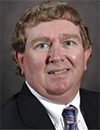In fact, in my 24-year career of traveling throughout Louisiana, I have found livestock producers either love bahiagrass or they hate it; there appears to be no middle ground with regard to this particular species.
For those who love it, bahiagrass does offer some very good advantages. The main advantage is: It persists well in soils with low to moderate fertility. These types of soils are found throughout the Southeastern states. It can tolerate close, continuous grazing better than most other grasses and, also, it produces a thick sod which minimizes weed encroachment. So what is not to like about this species?
The main disadvantage of bahiagrass compared to bermudagrass is: It’s lower in forage quality, primarily because it contains much more stem material. This generally translates into lower gains for livestock grazing bahiagrass rather than bermudagrass. The haters of bahiagrass will say it wears out the teeth of their livestock or dulls the blades on their bush-hog. While these statements may be somewhat exaggerated, these are commonly held beliefs.
So, to me, the bottom line is: While bahiagrass may have some advantages or disadvantages, depending on your point of view, it does have a niche as a perennial forage grass species that performs reasonably well in low-fertility soils without a lot of inputs. I have also found if producers provide at least a moderate level of fertilization and grazing management to their bahiagrass pastures, they generally are fairly pleased with how well the bahiagrass responds to these management inputs.
Some background
Bahiagrass is native to South America, and the first introduction into the U.S. occurred in 1913 in Florida. Common bahiagrass was grown throughout the Southeast until the 1930s and 1940s, when the varieties Pensacola and Argentine were released. Tifton 9 was released in 1987 from a selection of Pensacola. In 2009, three new varieties were released: AU Sand Mountain, TifQuik and UF-Riata. While producers are now planting some of the newer varieties, the majority of the bahiagrass acreage in the Southeast consists primarily of Pensacola and Argentine.
Bahiagrass is generally planted in the spring or summer, but seeding dates and rates vary by state, so producers are encouraged to contact their local extension agent for specific seeding recommendations. The main thing to keep in mind when establishing bahiagrass is the need for patience. Bahiagrass contains a moderate to large amount of dormant seed that germinates over a period of months.
Toward the end of the summer, some plants may be fully grown and others only several inches tall. Also, there are no available herbicides that will selectively control annual grasses in newly planted bahiagrass. Clipping on a regular basis is the only way to remove competition from a bahiagrass planting. It is difficult to evaluate a stand of bahiagrass before the end of the summer of the establishment year, and it may take two to three years before a full stand of bahiagrass is achieved.
Bahiagrass has a somewhat undeserved reputation for not responding to nitrogen fertilization and rarely receives high rates of nitrogen fertilizer. However, research studies conducted in several states have indicated bahiagrass is responsive to nitrogen fertilization. Once a stand of bahiagrass has been established, annual nitrogen applications of 100 to 200 pounds of nitrogen per acre should be used for good forage production. Also, bahiagrass tends to be less sensitive to soil pH than many other forage species. Producers should attempt to maintain soil pH at a level of about 6.0.
Grazing vs. haying
Since bahiagrass has predominantly low-growing, dense growth, it is an excellent species for use in grazing. About 40 percent of bahiagrass forage is produced between zero and 1 inch in height. Bahiagrass must be closely grazed or clipped to keep it tender and succulent with good quality. When bahiagrass has grown 8 to 10 inches tall, it is very tough, low-quality and unpalatable. It produces very little new growth after it reaches this stage, and the quality drops the longer it stands. As a rule, it is a good management practice to clip bahiagrass pastures periodically to remove seedheads and keep plants in a vegetative and palatable growth stage.
It is a common practice in the Southeast for livestock producers to extend the grazing season by overseeding a winter annual, such as annual ryegrass, into a bahiagrass stand during the fall. Since bahiagrass forms a dense, tough sod, it is a good management practice to clip or graze the bahiagrass as close to the ground as possible. Harrowing or light-disking the area after seeding is recommended to get the seed in contact with the soil and promote rapid germination.
Bahiagrass is generally not considered to be a species conducive for high-quality hay production. The main issue is: Since most of the forage growth of bahiagrass is located near the soil surface, producers must delay harvest until enough forage has accumulated in order to justify harvesting the crop. By delaying harvest, the bahiagrass plants mature and, consequently, the quality of the forage declines.
The forage quality of bahiagrass hay is usually lower than that of bermudagrass hay. Some commercial hay producers who market high-quality bermudagrass hay consider bahiagrass to be a contaminant in their hay and may use herbicides to remove invasive bahiagrass plants from their bermudagrass hayfields.
In summary, bahiagrass is a competitive, well-adapted perennial summer grass species that grows throughout the Southeast region. Bahiagrass does respond to nitrogen fertilization and can produce ample amounts of forage throughout the summer.
Bahiagrass offers a dependable, competitive and relatively low-cost option for summer pastures. Many livestock producers desire good stands of dependable forage with moderate levels of fertilization and grazing management. For those producers, bahiagrass fits the bill quite nicely. ![]()

-
Ed Twidwell
- Professor, Extension Agronomist
- LSU Agricultural Center
- Email Ed Twidwell









